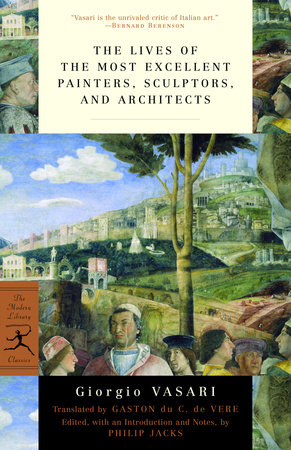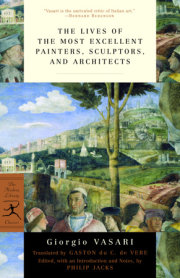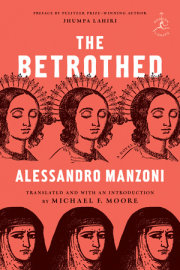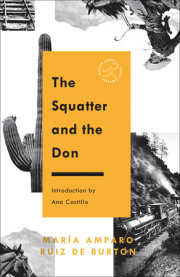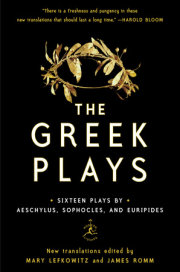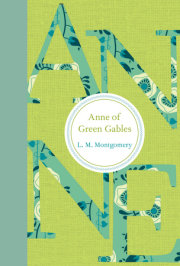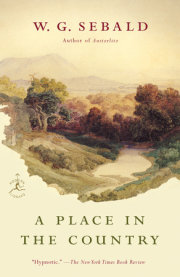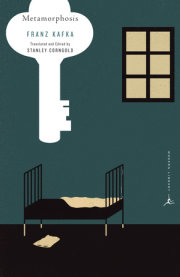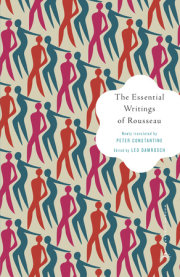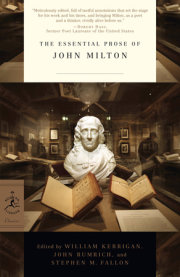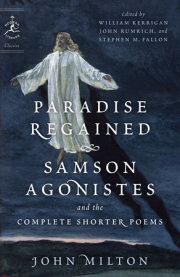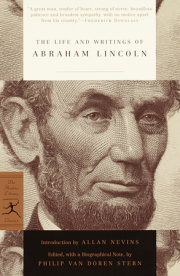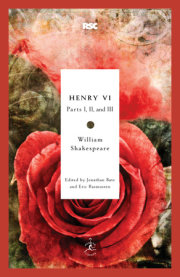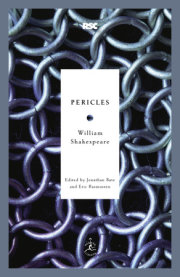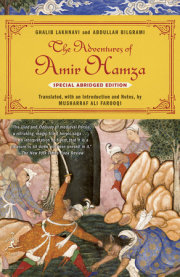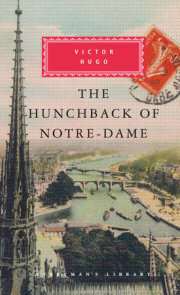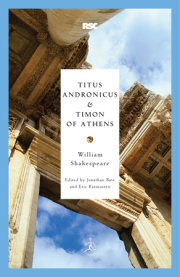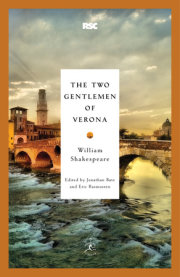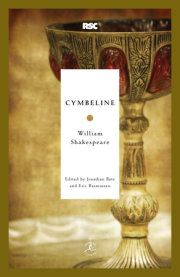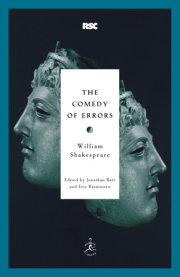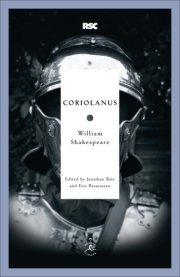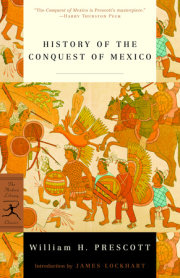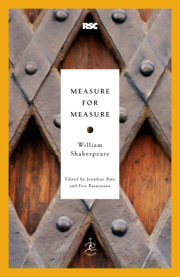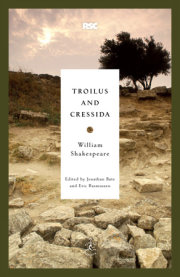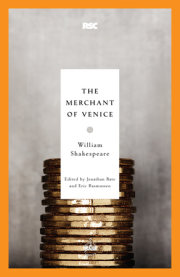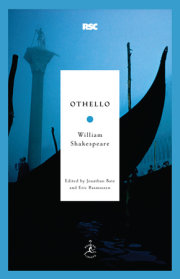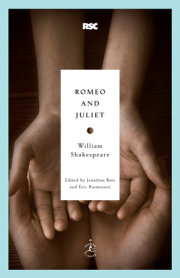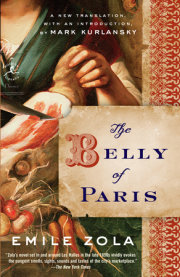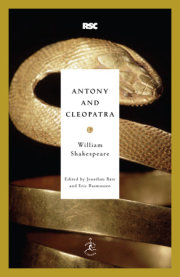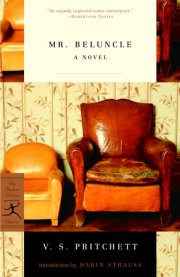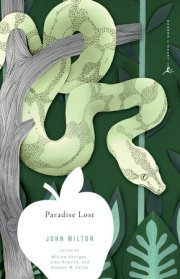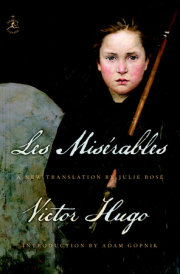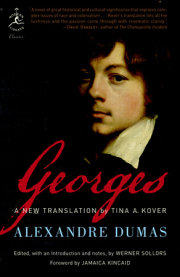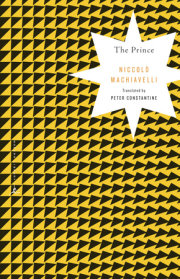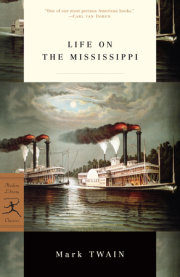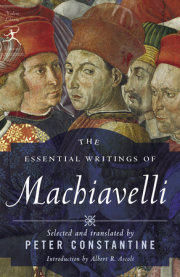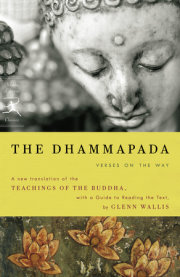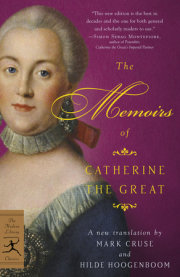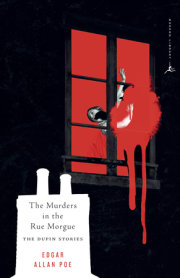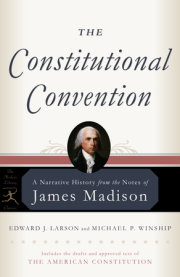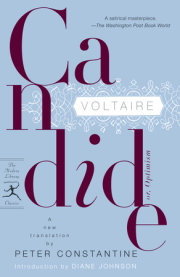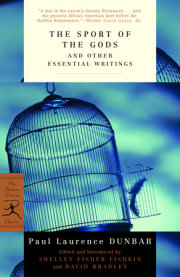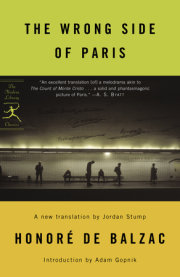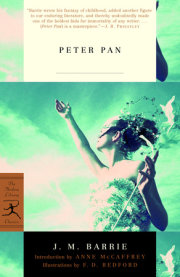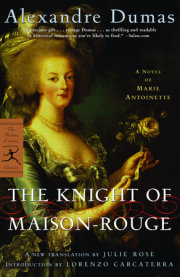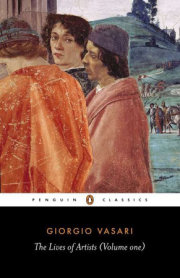Preface to the Lives
I have no manner of doubt that it is with almost all writers a common and deeply-fixed opinion that sculpture and painting together were first discovered, by the light of nature, by the people of Egypt, and that there are certain others who attribute to the Chaldæans the first rough sketches in marble and the first reliefs in statuary, even as they also give to the Greeks the invention of the brush and of coloring. But I will surely say that of both one and the other of these arts the design, which is their foundation, nay rather, the very soul that conceives and nourishes within itself all the parts of man’s intellect, was already most perfect before the creation of all other things, when the Almighty God, having made the great body of the world and having adorned the heavens with their exceeding bright lights, descended lower with His intellect into the clearness of the air and the solidity of the earth, and, shaping man, discovered, together with the lovely creation of all things, the first form of sculpture; from which man afterwards, step by step (and this may not be denied), as from a true pattern, there were taken statues, sculptures, and the science of pose and of outline; and for the first pictures (whatsoever they were), softness, harmony, and the concord in discord that comes from light and shade. Thus, then, the first model whence there issued the first image of man was a lump of clay, and not without reason, seeing that the Divine Architect of time and of nature, being Himself most perfect, wished to show in the imperfection of the material the way to add and to take away; in the same manner wherein the good sculptors and painters are wont to work, who, adding and taking away in their models, bring their imperfect sketches to that final perfection which they desire. He gave to man that most vivid color of flesh, whence afterwards there were drawn for painting, from the mines of the earth, the colors themselves for the counterfeiting of all those things that are required for pictures. It is true, indeed, that it cannot be affirmed for certain what was made by the men before the Flood in these arts in imitation of so beautiful a work, although it is reasonable to believe that they too carved and painted in every manner; seeing that Belus, son of the proud Nimrod, about 200 years after the Flood, caused to be made that statue wherefrom there was afterwards born idolatry, and his son’s wife, the very famous Semiramis, Queen of Babylon, in the building of that city, placed among its adornments not only diverse varied kinds of animals, portrayed and colored from nature, but also the image of herself and of Ninus, her husband, and, moreover, statues in bronze of her husband’s father, of her husband’s mother, and of the mother of the lat- ter, as Diodorus relates, calling them by the Greek names (that did not yet exist) Jove, Juno, and Ops. From these statues, perchance, the Chaldæans learned to make the images of their gods, seeing that 150 years later Rachel, in flying from Mesopotamia together with Jacob her husband, stole the idols of Laban her father, as is clearly related in Genesis. Nor, indeed, were the Chaldæans alone in making sculptures and pictures, but the Egyptians made them also, exercising themselves in these arts with that so great zeal which is shown in the marvelous tomb of the most ancient King Osimandyas, copiously described by Diodorus, and proved by the stern commandment made by Moses in the Exodus from Egypt, namely, that under pain of death there should be made to God no image whatsoever. He, on descending from the mountain, having found the golden calf wrought and adored solemnly by his people, and being greatly perturbed to see Divine honors paid to the image of a beast, not only broke it and reduced it to powder, but for punishment of so great a sin caused many thousands of the wicked sons of Israel to be slain by the Levites. But because not the making of statues but their adoration was a deadly sin, we read in Exodus that the art of design and of statuary, not only in marble but in every kind of metal, was bestowed by the mouth of God on Bezaleel, of the tribe of Judah, and on Aholiab, of the tribe of Dan, who were those that made the two cherubim of gold, the candlesticks, the veil, the borders of the priestly vestments, and so many other most beautiful castings for the Tabernacle, for no other reason than to bring the people to contemplate and to adore them.
From the things seen before the Flood, then, the pride of men found the way to make the statues of those for whom they wished that they should remain famous and immortal in the world. And the Greeks, who think differently about this origin, say that the Ethiopians invented the first statues, as Diodorus tells; that the Egyptians took them from the Ethiopians, and, from them, the Greeks; for by Homer’s time sculpture and painting are seen to have been perfected, as it is proved, in discoursing of the shield of Achilles, by that divine poet, who shows it to us carved and painted, rather than described, with every form of art. Lactantius Firmianus, by way of fable, attributes it to Prometheus, who, in the manner of Almighty God, shaped man’s image out of mud; and from him, he declares, the art of statuary came. But according to what Pliny writes, this came to Egypt from Gyges the Lydian, who, being by the fire and gazing at his own shadow, suddenly, with some charcoal in his hand, drew his own outline on the wall. And from that age, for a time, outlines only were wont to be used, with no body of color, as the same Pliny confirms; which method was rediscovered with more labor by Philocles the Egyptian, and likewise by Cleanthes and Ardices of Corinth and by Telephanes of Sicyon.
Cleophantes of Corinth was the first among the Greeks who used colors, and Apollodorus the first who discovered the brush. There followed Polygnotus of Thasos, Zeuxis, and Timagoras of Chalcis, with Pythias and Aglaophon, all most celebrated; and after these the most famous Apelles, so much esteemed and honored by Alexander the Great for his talent, and the most ingenious investigator of slander and false favor, as Lucian shows us; even as almost all the excellent painters and sculptors were endowed by Heaven, in nearly every case, not only with the adornment of poetry, as may be read of Pacuvius, but with philosophy besides, as may be seen in Metrodorus, who, being as well versed in philosophy as in painting, was sent by the Athenians to Paulus Emilius to adorn his triumph, and remained with him to read philosophy to his sons.
The art of sculpture, then, was greatly exercised in Greece, and there appeared many excellent craftsmen, and, among others, Pheidias, an Athenian, with Praxiteles and Polycletus, all very great masters, while Lysippus and Pyrgoteles were excellent in sunk reliefs, and Pygmalion in reliefs in ivory, of whom there is a fable that by his prayers he obtained breath and spirit for the figure of a virgin that he made. Painting, likewise, was honored and rewarded by the ancient Greeks and Romans, seeing that to those who made it appear marvelous they showed favor by bestowing on them citizenship and the highest dignities. So greatly did this art flourish in Rome that Fabius gave renown to his house by writing his name under the things so beautifully painted by him in the temple of Salus, and calling himself Fabius Pictor. It was forbidden by public decree that slaves should exercise this art throughout the cities, and so much honor did the nations pay without ceasing to the art and to the craftsmen that the rarest works were sent among the triumphal spoils, as marvelous things, to Rome, and the finest craftsmen were freed from slavery and recompensed with honors and rewards by the commonwealths.
The Romans themselves bore so great reverence for these arts that besides the respect that Marcellus, in sacking the city of Syracuse, commanded to be paid to a craftsman famous in them, in planning the assault of the aforesaid city they took care not to set fire to that quarter wherein there was a most beautiful painted panel, which was afterwards carried to Rome in the triumph, with much pomp. Thither, having, so to speak, despoiled the world, in course of time they assembled the craftsmen themselves as well as their finest works, wherewith afterwards Rome became so beautiful, for the reason that she gained so great adornment from the statues from abroad more than from her own native ones; it being known that in Rhodes, the city of an island in no way large, there were more than 30,000 statues counted, either in bronze or in marble, nor did the Athenians have less, while those at Olympia and at Delphi were many more and those in Corinth numberless, and all were most beautiful and of the greatest value. Is it not known that Nicomedes, King of Lycia, in his eagerness for a Venus that was by the hand of Praxiteles, spent on it almost all the wealth of his people? Did not Attalus the same, who, in order to possess the picture of Bacchus painted by Aristides, did not scruple to spend on it more than 6,000 sesterces? Which picture was placed by Lucius Mummius in the temple of Ceres with the greatest pomp, in order to adorn Rome.
But for all that the nobility of these arts was so highly valued, it is none the less not yet known for certain who gave them their first beginning. For, as has been already said above, it appears most ancient among the Chaldæans, some give it to the Ethiopians, and the Greeks attribute it to themselves; and it may be thought, not without reason, that it is perchance even more ancient among the Etruscans, as our Leon Batista Alberti testifies, whereof we have clear enough proof in the marvelous tomb of Porsena at Chiusi, where, no long time since, there were discovered underground, between the walls of the Labyrinth, some terra-cotta tiles with figures on them in half-relief, so excellent and in so beautiful a manner that it can be easily recognized that the art was not begun precisely at that time, nay rather, by reason of the perfection of these works, that it was much nearer its height than its beginning. To this, moreover, witness is likewise borne by our seeing every day many pieces of those red and black vases of Arezzo, made, as may be judged from the manner, about those times, with the most delicate carvings and small figures and scenes in low-relief, and many small round masks wrought with great subtlety by masters of that age, men most experienced, as is shown by the effect, and most excellent in that art. It may be seen, moreover, by reason of the statues found at Viterbo at the beginning of the pontificate of Alexander VI, that sculpture was in great esteem and in no small perfection among the Etruscans; and although it is not known precisely at what time they were made, it may be reasonably conjectured, both from the manner of the figures and from the style of the tombs and of the buildings, no less than from the inscriptions in those Etruscan letters, that they are most ancient and were made at a time when the affairs of this country were in a good and prosperous state. But what clearer proof of this can be sought? seeing that in our own day—that is, in the year 1554—there has been found a bronze figure of the Chimæra of Bellerophon, in making the ditches, fortifications, and walls of Arezzo, from which figure it is recognized that the perfection of that art existed in ancient times among the Etruscans, as may be seen from the Etruscan manner and still more from the letters carved on a paw, about which—since they are but few and there is no one now who understands the Etruscan tongue—it is conjectured that they may represent the name of the master as well as that of the figure itself, and perchance also the date, according to the use of those times. This figure, by reason of its beauty and antiquity, has been placed in our day by the Lord Duke Cosimo in the hall of the new rooms in his Palace, wherein there have been painted by me the acts of Pope Leo X. And besides this there were found in the same place many small figures in bronze after the same manner, which are in the hands of the said Lord Duke.
But since the dates of the works of the Greeks, the Ethiopians, and the Chaldæans are as doubtful as our own, and perhaps more, and by reason of the greater need of founding our judgment about these works on conjectures, which, however, are not so feeble that they are in every way wide of the mark, I believe that I strayed not at all from the truth (and I think that everyone who will consent to consider this question discreetly will judge as I did), when I said above that the origin of these arts was nature herself, and the example or model, the most beautiful fabric of the world, and the master, that divine light infused by special grace into us, which has not only made us superior to the other animals, but, if it be not sin to say it, like to God. And if in our own times it has been seen (as I trust to be able to demonstrate a little later by many examples) that simple children roughly reared in the woods, with their only model in the beautiful pictures and sculptures of nature, and by the vivacity of their wit, have begun by themselves to make designs, how much more may we, nay, must we confidently believe that these primitive men, who, in proportion as they were less distant from their origin and divine creation, were thereby the more perfect and of better intelligence, that they, by themselves, having for guide nature, for master purest intellect, and for exam- ple the so lovely model of the world, gave birth to these most noble arts, and from a small beginning, little by little bettering them, brought them at last to perfection? I do not, indeed, wish to deny that there was one among them who was the first to begin, seeing that I know very well that it must needs be that at some time and from some one man there came the beginning; nor, also, will I deny that it may have been possible that one helped another and taught and opened the way to design, to color, and relief, because I know that our art is all imitation, of nature for the most part, and then, because a man cannot by himself rise so high, of those works that are executed by those whom he judges to be better masters than himself. But I say surely that the wishing to affirm dogmatically who this man or these men were is a thing very perilous to judge, and perchance little necessary to know, provided that we see the true root and origin wherefrom art was born. For since, of the works that are the life and the glory of the craftsmen, the first and step by step the second and the third were lost by reason of time, that consumes all things, and since, for lack of writers at that time, they could not, at least in that way, become known to posterity, their craftsmen as well came to be forgotten. But when once the writers began to make record of things that were before their day, they could not speak of those whereof they had not been able to have information, in a manner that there came to be first with them those of whom the memory had been the last to be lost. Even as the first of the poets, by common consent, is said to be Homer, not because there were none before him, for there were, although not so excellent, which is seen clearly from his own works, but because of these early poets, whatever manner of men they were, all knowledge had been lost quite 2,000 years before. However, leaving behind us this part, as too uncertain by reason of its antiquity, let us come to the clearer matters of their perfection, ruin, and restoration, or rather resurrection, whereof we will be able to discourse on much better grounds.
I say, then, it being true indeed, that they began late in Rome, if the first figure was, as is said, the image of Ceres made of metal from the treasure of Spurius Cassius, who, for conspiring to make himself King, was put to death by his own father without any scruple; and that although the arts of sculpture and of painting continued up to the end of the twelve Cæsars, they did not, however, continue in that perfection and excellence which they had enjoyed before, for it may be seen from the edifices that the Emperors built in succession one after the other that these arts, decaying from one day to another, were coming little by little to lose their whole perfection of design. And to this clear testimony is borne by the works of sculpture and of architecture that were wrought in the time of Constantine in Rome, and in particular the triumphal arch raised for him by the Roman people near the Colosseum, wherein it is seen that in default of good masters they not only made use of marble groups made at the time of Trajan, but also of the spoils brought from various places to Rome. And whosoever knows that the votive offerings in the medallions, that is, the sculptures in half-relief, and likewise the prisoners, and the large groups, and the columns, and the moldings, and the other ornaments, whether made before or from spoils, are excellently wrought, knows also that the works which were made to fill up by the sculptors of that time are of the rudest, as also are certain small groups with little figures in marble below the medallions, and the lowest base wherein there are certain victories, and certain rivers between the arches at the sides, which are very rude and so made that it can be believed most surely that by that time the art of sculpture had begun to lose something of the good. And there had not yet come the Goths and the other barbarous and outlandish peoples who destroyed, together with Italy, all the finer arts. It is true, indeed, that in the said times architecture had suffered less harm than the other arts of design had suffered, for in the bath that Constantine erected on the Lateran, in the entrance of the principal porch it may be seen, to say nothing of the porphyry columns, the capitals wrought in marble, and the double bases taken from some other place and very well carved, that the whole composition of the building is very well conceived; whereas, on the contrary, the stucco, the mosaics, and certain incrustations on the walls made by masters of that time are not equal to those that he caused to be placed in the same bath, which were taken for the most part from the temples of the heathen gods. Constantine, so it is said, did the same in the garden of Æquitius, in making the temple which he afterwards endowed and gave to the Christian priests. In like manner, the magnificent Church of S. Giovanni Laterano, erected by the same Emperor, can bear witness to the same—namely, that in his day sculpture had already greatly declined; for the image of the Savior and the twelve Apostles in silver that he caused to be made were very debased sculptures, wrought without art and with very little design. Besides this, whosoever examines with diligence the medals of Constantine and his image and other statues made by the sculptors of that time, which are at the present day in the Campidoglio, may see clearly that they are very far removed from the perfection of the medals and statues of the other Emperors; and all this shows that long before the coming of the Goths into Italy sculpture had greatly declined.
Architecture, as has been said, continued to maintain itself, if not so perfect, in a better state; nor is there reason to marvel at this, seeing that, as the great edifices were made almost wholly of spoils, it was easy for the architects, in making the new, to imitate in great measure the old, which they had ever before their eyes, and that much more easily than the sculptors could imitate the good figures of the ancients, their art having wholly vanished. And that this is true is manifest, because the Church of the Prince of the Apostles on the Vatican was not rich save in columns, bases, capitals, architraves, moldings, doors, and other incrustations and ornaments, which were all taken from various places and from the edifices built most magnificently in earlier times. The same could be said of S. Croce in Gierusalemme, which Constantine erected at the entreaty of his mother Helena, of S. Lorenzo outside the walls of Rome, and of S. Agnesa, built by him at the request of Constantia, his daughter. And who does not know that the font which served for the baptism of both her and her sister was all adorned with works wrought long before, and in particular with the porphyry basin carved with most beautiful figures, with certain marble candlesticks excellently carved with foliage, and with some boys in low-relief that are truly most beautiful? In short, for these and many other reasons it is clear how much, in the time of Constantine, sculpture had already declined, and together with it the other finer arts. And if anything was wanting to complete this ruin, it was supplied to them amply by the departure of Constantine from Rome, on his going to establish the seat of the Empire at Byzantium; for the reason that he took with him not only all the best sculptors and other craftsmen of that age, whatsoever manner of men they were, but also an infinite number of statues and other works of sculpture, all most beautiful.
After the departure of Constantine, the Cæsars whom he left in Italy, building continually both in Rome and elsewhere, exerted themselves to make their works as fine as they could; but, as may be seen, sculpture, as well as painting and architecture, went ever from bad to worse, and this perchance came to pass because, when human affairs begin to decline, they never cease to go ever lower and lower until such time as they can grow no worse. So, too, it may be seen that although at the time of Pope Liberius the architects of that day strove to do something great in constructing the Church of S. Maria Maggiore, they were yet not happy in the success of the whole, for the reason that although that building, which is likewise composed for the greater part of spoils, was made with good enough proportions, it cannot be denied any the less, not to speak of certain other parts, that the frieze made right round above the columns with ornaments in stucco and in painting is wholly wanting in design, and that many other things which are seen in that great church demonstrate the imperfection of the arts.
Many years after, when the Christians were persecuted under Julian the Apostate, there was erected on the Cœlian Mount a church to S. John and S. Paul, the martyrs, in a manner so much worse than those named above, that it is seen clearly that the art was at that time little less than wholly lost. The buildings, too, that were erected at the same time in Tuscany, bear most ample testimony to this; and not to speak of many others, the church that was built outside the walls of Arezzo to S. Donatus, Bishop of that city (who, together with the monk Hilarian, suffered martyrdom under the said Julian the Apostate), was in no way better in architecture than those named above. Nor can it be believed that this came from anything else but the absence of better architects in that age, seeing that the said church (as it has been possible to see in our own day), which is octagonal and constructed from the spoils of the Theater, the Colosseum and other edifices that had been standing in Arezzo before it was converted to the faith of Christ, was built without thought of economy and at the greatest cost, and adorned with columns of granite, of porphyry, and of many-colored marbles, which had belonged to the said buildings. And for myself I do not doubt, from the expense which was clearly bestowed on that church, that if the Aretines had had better architects they would have built something marvelous; for it may be seen from what they did that they spared nothing if only they might make that work as rich and as well designed as they possibly could, and since, as has been already said so many times, architecture had lost less of its perfection than the other arts, there was to be seen therein some little of the good. At this time, likewise, was enlarged the Church of S. Maria in Grado, in honor of the said Hilarian, for the reason that he had been for a long time living in it when he went, with Donatus, to the crown of martyrdom.
But because Fortune, when she has brought men to the height of her wheel, is wont, either in jest or in repentance, to throw them down again, it came about after these things that there rose up in various parts of the world all the barbarous peoples against Rome; whence there ensued after no long time not only the humiliation of so great an Empire but the ruin of the whole, and above all of Rome herself, and with her were likewise utterly ruined the most excellent craftsmen, sculptors, painters, and architects, leaving the arts and their own selves buried and submerged among the miserable massacres and ruins of that most famous city. And the first to fall into decay were painting and sculpture, as being arts that served more for pleasure than for use, while the other—namely, architecture—as being necessary and useful for bodily weal, continued to exist, but no longer in its perfection and excellence. And if it had not been that the sculptures and pictures presented, to the eyes of those who were born from day to day, those who had been thereby honored to the end that they might have eternal life, there would soon have been lost the memory of both; whereas some of them survived in the images and in the inscriptions placed in private houses, as well as in public buildings, namely, in the amphitheaters, the theaters, the baths, the aqueducts, the temples, the obelisks, the colossi, the pyramids, the arches, the reservoirs, the public treasuries, and finally, in the very tombs, whereof a great part was destroyed by a barbarous and savage race who had nothing in them of man but the shape and the name. These, among others, were the Visigoths, who, having created Alaric their King, assailed Italy and Rome and sacked the city twice without respect for anything whatsoever. The same, too, did the Vandals, having come from Africa with Genseric, their King, who, not content with his booty and prey and all the cruelties that he wrought there, carried away her people into slavery, to their exceeding great misery, and among them Eudoxia, once the wife of the Emperor Valentinian, who had been slaughtered no long time before by his own soldiers. For these, having fallen away in very great measure from the ancient Roman valor, for the reason that all the best had gone a long time before to Byzantium with the Emperor Constantine, had no longer any good customs or ways of life. Nay more, there had been lost at one and the same time all true men and every sort of virtue, and laws, habits, names, and tongues had been changed; and all these things together and each by itself had caused every lovely mind and lofty intellect to become most brutish and most base.
But what brought infinite harm and damage on the said professions, even more than all the aforesaid causes, was the burning zeal of the new Christian religion, which, after a long and bloody combat, with its wealth of miracles and with the sincerity of its works, had finally cast down and swept away the old faith of the heathens, and, devoting itself most ardently with all diligence to driving out and extirpating root and branch every least occasion whence error could arise, not only defaced or threw to the ground all the marvelous statues, sculptures, pictures, mosaics, and ornaments of the false gods of the heathens, but even the memorials and the honors of numberless men of mark, to whom, for their excellent merits, the noble spirit of the ancients had set up statues and other memorials in public places. Nay more, it not only destroyed, in order to build the churches for the Christian use, the most honored temples of the idols, but in order to ennoble and adorn S. Pietro (to say nothing of the ornaments which had been there from the beginning) it also robbed of its stone columns the Mausoleum of Hadrian, now called the Castello di S. Angelo, and many other buildings that today we see in ruins. And although the Christian religion did not do this by reason of hatred that it bore to the arts, but only in order to humiliate and cast down the gods of the heathens, it was none the less true that from this most ardent zeal there came so great ruin on these honored professions that their very form was wholly lost. And as if aught were wanting to this grievous misfortune, there arose against Rome the wrath of Totila, who, besides razing her walls and destroying with fire and sword all her most wonderful and noble buildings, burned the whole city from end to end, and, having robbed her of every living body, left her a prey to flames and fire, so that there was not found in her in eighteen successive days a single living soul; and he cast down and destroyed so completely the marvelous statues, pictures, mosaics, and works in stucco, that there was lost, I do not say only their majesty, but their very form and essence. Wherefore, it being the lower rooms chiefly of the palaces and other buildings that were wrought with stucco, with painting, and with statuary, there was buried by the ruins from above all that good work that has been discovered in our own day, and those who came after, judging the whole to be in ruins, planted vines thereon, in a manner that, since the said lower rooms remained under the ground, the moderns have called them grottoes, and “grotesque” the pictures that are therein seen at the present day.
After the end of the Ostrogoths, who were destroyed by Narses, men were living among the ruins of Rome in some fashion, poorly indeed, when there came, after 100 years, Constantine II, Emperor of Constantinople, who, although received lovingly by the Romans, laid waste, robbed, and carried away all that had remained, more by chance than by the good will of those who had destroyed her, in the miserable city of Rome. It is true, indeed, that he was not able to enjoy this booty, because, being carried by a sea-tempest to Sicily and being justly slain by his own men, he left his spoils, his kingdom, and his life a prey to Fortune. But she, not yet content with the woes of Rome, to the end that the things stolen might never return, brought thither for the ruin of the island a host of Saracens, who carried off both the wealth of the Sicilians and the spoils of Rome to Alexandria, to the very great shame and loss of Italy and of Christendom. And so all that the Pontiffs had not destroyed (and above all S. Gregory, who is said to have decreed banishment against all the remainder of the statues and of the spoils of the buildings) came finally, at the hands of that most rascally Greek, to an evil end; in a manner that, there being no trace or sign to be found of anything that was in any way good, the men who came after, although rude and boorish, and in particular in their pictures and sculptures, yet, incited by nature and refined by the air, set themselves to work, not according to the rules of the aforesaid arts, which they did not know, but according to the quality of their own intelligence.
Copyright © 2006 by Giorgio Vasari. All rights reserved. No part of this excerpt may be reproduced or reprinted without permission in writing from the publisher.

